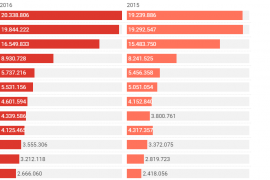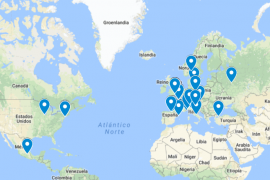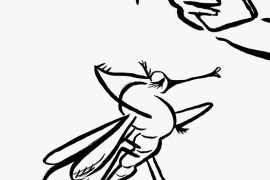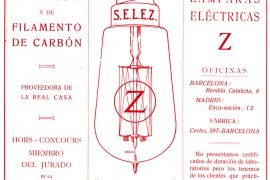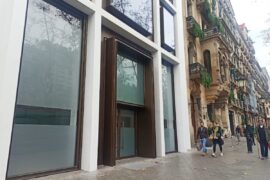[dropcap letter=”C”]
uliacán, capital and center of the Mexican state of Sinaloa -located between the Pacific Ocean and the occidental Sierra Madre- is a place markedly characterized by contrasts: violent and yet full of life, cozy and relatively dangerous, marked by the narco and impregnated of a rich cultural and university activity. Its economy emphasizes the agricultural sector, especially corn and horticultural products, which are exported on a large scale to other areas of Mexico, the United States and Europe. Tomato somehow became, in the second half of the twentieth century, the “red gold”-as the title of an interesting study by Eduardo Fredes states- and gave the name to Culiacán’s baseball team: the Tomateros. The sociability and friendliness of the inhabitants of the city, called Culiacanenses or Culichis, disarms fears and prejudices. Sinaloa is captivating and disconcerting, wrote Juan Villoro. Behind some topical images forged on this region of the Mexican northwest and on Culiacán, in particular, there is another reality, more plural, more complex, more dynamic and also, as Susana Luján explains, more modern.
 In Nombre de perro, a novel by Élmer Mendoza published in 2012 -which belongs to the series of successful books starring Agent Edgar Mendieta, better known as Zurdo Mendieta, inaugurated with Balas de plata (2008)- one of the characters, Susana Luján, who has been living for a long time in the United States, expresses, during a short stay at her home-town Culiacan: “How has the city been modernized, despite what is said about violence? I see it full of life”. This is Culiacán, the cradle of Zurdo and Mendoza himself.
In Nombre de perro, a novel by Élmer Mendoza published in 2012 -which belongs to the series of successful books starring Agent Edgar Mendieta, better known as Zurdo Mendieta, inaugurated with Balas de plata (2008)- one of the characters, Susana Luján, who has been living for a long time in the United States, expresses, during a short stay at her home-town Culiacan: “How has the city been modernized, despite what is said about violence? I see it full of life”. This is Culiacán, the cradle of Zurdo and Mendoza himself.
Culiacán has changed a lot, certainly, in the 21st century, but it had already done so, deeply, in the 1960s and 1970s. Ronaldo González Valdés analyzed it in depth in Sinaloa: a divided society (2007). He showed how it took place an authentic symbolic, normative and moral breakdown, which facilitated the introduction of drug trafficking and its subculture. Poppy cultivation and opium trafficking -favored by Chinese emigration and American pressure during World War II, to produce morphine- ended in the distribution and large-scale trafficking of drugs, especially cocaine. The “gomeros de la sierra” would open the path, after all, to entities such as the Cártel de Sinaloa and characters such as El Chapo. Among the factors that caused the transformations in the sixties and the seventies there is a great population growth, the strong emigration of the countryside to the city, the shortage of services, agrarian conflicts, as well as university conflicts. Violent phenomena happened, like the one concerning the so-called “enfermos” from the Autonomous University of Sinaloa, that has been studied by Sergio Arturo Sánchez Parra. The breakdown of any principle of authority opened a door to violence that has not yet been closed.
An ideal day in Culiacán, the city of the three rivers -Humaya and Tamazula, that define the Culiacán, and San Lorenzo-, would begin with a good breakfast, with coffee, papaya and some eggs with chilorio -a Sinaloense specialty, although I confess my devotion, in this field, for ranchers eggs- followed by a walk through the center and a visit to the MASIN, the Museum of Art of Sinaloa, properly managed by Minerva Solano. Diego Rivera’s 1906 self-portrait is one of the most notable pieces in the art center. Around 2.30pm, or 2.45, it is time to eat. It can be done at Els Arcos -my favorite- or in another restaurant, but also in one of the many street seafood-carts. Shrimp are not to be missed, neither the tasty and delicate callos de hacha, nor the pescado zarandeado. Dishes that should be paired, if possible, with Tequila Herradura and some bottles of Pacífico beer.
After a short break in the hotel room, in the afternoon I recommend visiting the Malverde chapel, the saint of drug traffickers and humble people, whose image combines traits of Pedro Infante de Mazatlán and Jorge Negrete. A saint which is not recognized by the Church, but of extensive and ingrained devotion. Perhaps you are lucky, and a band plays corridos as a thanksgiving for a person who granted favors or made promises. It is such an impressive spectacle, that, at the same time, allows to understand the foundations of a somehow rooted narcoculture. At the of the day, there is nothing better than a good conversation with friends and acquaintances in a traditional canteen, like the Guayabo. Live music makes the visit worth, in addition to an extraordinary fried chicken, that I suggest accompanying with tortilla corn and spicy sauce, and pair it with Indio beer. If you manage to do everything that I have just proposed, you will be able to make sure, like Élmer Mendoza’s Susana, that Culiacán is full of life.



